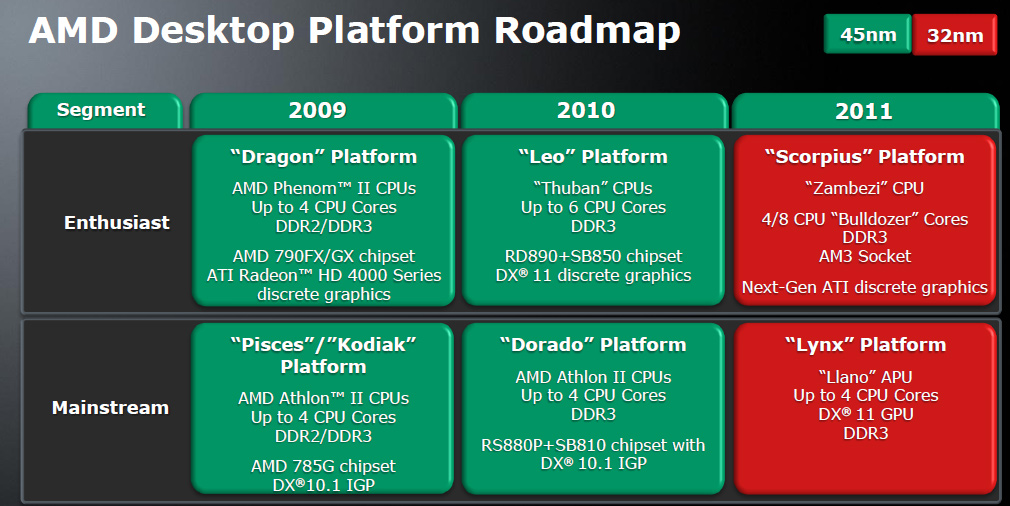Bulldozer will require some new chipsets to bring all of its new features to the surface and best possible performance. New information reveals no less than three new northbridges, and two southbridges of the AMD 9 series, in 2011.
AMD has named the enthusiast platform Scorpius and in the second half of 2011 we will find Bulldozer-based processorers of the Zambezi family, and the new 9 series of chipsets. The chipset usually consist of two physical circuits, I.e. northbridge and southbridge.
These handle all communication between CPU and other components, e.g. RAM, graphics cards, storage media and other parts of the computer. The northbridge of the 9 series houses connections for graphics cards, monitors and memory. It also has a data path to the southbridge that in turn handles a variety of units through different I/O interfaces like USB, SATA, and network and audio signals.
Northbridges
- AMD 990FX: Support for two PCI Express 2.0 x16 slots (can be configured as four PCI-e 2.0 x8), six PCI-e 2.0 x1 ports and one PCI-e 2.0 x4 port. Will be paired with the SB950 southbridge.
- AMD 990X: Support for one PCI Express 2.0 x16 port (can be configured as two PCI-e 2.0 x8), six PCI-e 2.0 x1 ports.
- AMD 970: Support for one PCI Express 2.0 x16 port. Will be paired with SB950 or SB920 southbridge.
Southbridges
- AMD SB950: Four PCI Express 2.0 x1 ports, 14x USB 2.0, PCI bus, six SATA 6.0 Gbps ports with RAID 0, 1, 5, 10.
- AMD SB920: Two PCI Express 2.0 x1 ports, 14x USB 2.0, PCI bus, six SATA 6.0 Gbps ports with RAID 0, 1, 10.
According to the specifications that were published by X-bit Labs the new north and southbridges will be similar to those already available today. The top model AMD 990FX has just as many PCI Express-lanes as the current 880FX, 42. While the southbridges will offers similar functionality as current cirucits, which means no integrated USB 3.0.
AMD makes no major upgrades with the 9 series but the Bulldozer support will make them part of the new Socket AM3+ platform, which is backwards compatible with current Socket AM3 processors. The new chipsets will also support IOMMU (input/output memory management unit) a function that translates virtual addresses to physical addresses and can be used for demanding I/O virtualization. Exactly how AMD will use this technology wasn’t mentioned.
















